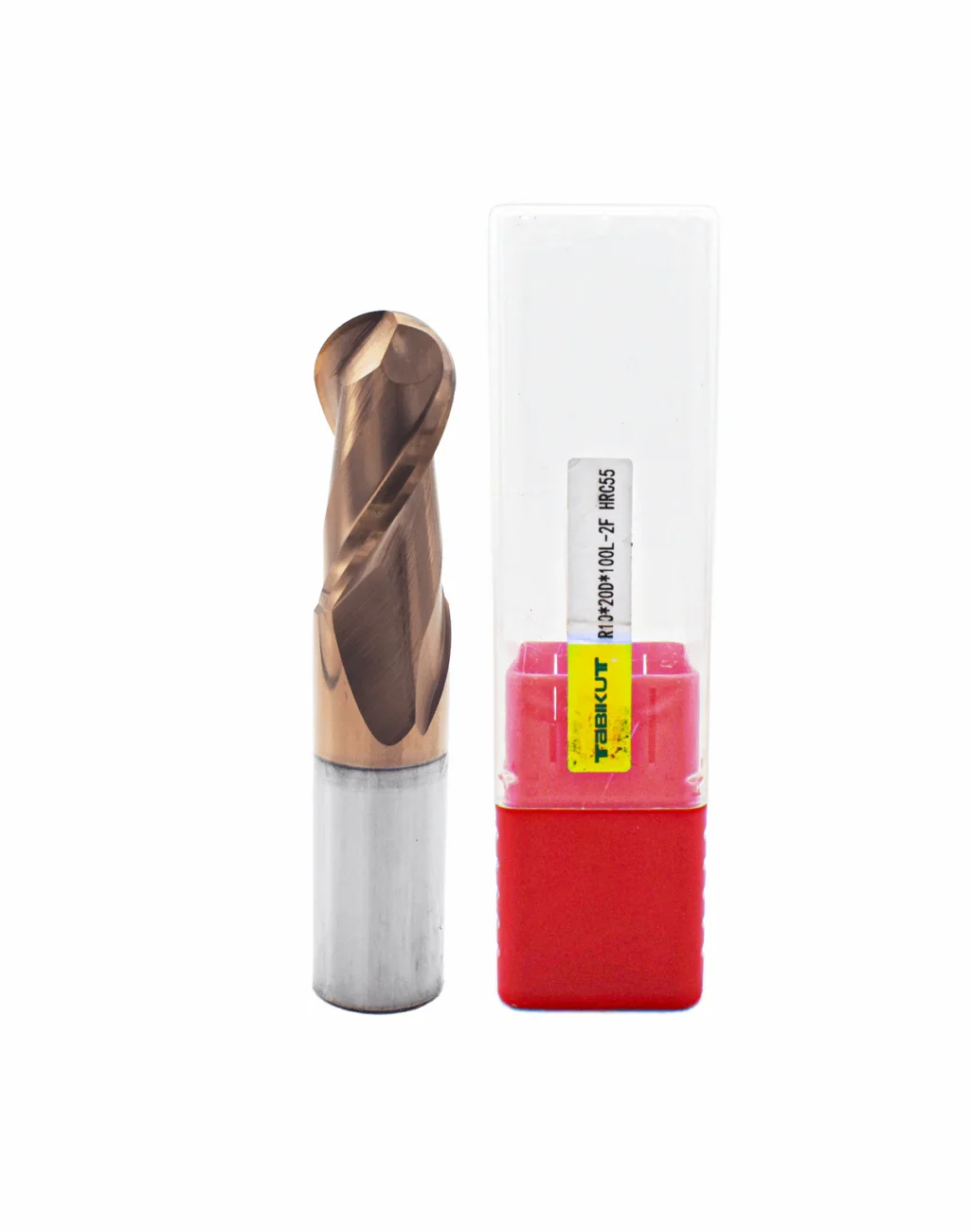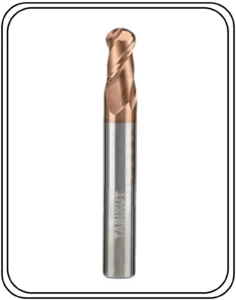

Intro
At the world of precision machining, these end mill tools have a distinct reputation between carbide ball nose end mills in speed of bringing shape options into life as well as finely cut contours and smooth finishes under consistent usage performance. Mold making, die production, or perhaps complex 3D surface machining: whether it is any of these, your tool kit cannot be complete without these tools.
What is a Carbide Ball Nose?
At the end of the carbide ball nose end mill is a rounded tip rather than a flat end, which is what most mills have. With this spherical geometry, it makes a ball nose suitable for 3D contouring applications where sharp corners are not really practicable or desirable
Material: Tungsten carbide is a combination of carbon and tungsten from which this tool is made. This category of tools is very hard and wear-resistant even at high cutting speeds.
Geometry: The ball-shaped tip reduces the tool marks that lead to smoother surface finishes for complex shaped tools.
Key Features of Carbide Ball End Mills:
High Precision
Profiling and 3D engraving require such tools, especially for mold and die applications.
Excellent Surface Finish
Round Nose helps minimize tool marks so that superior finishing is obtained on curves.
Durability
Hardness of carbide is such that it provides longer life for tools, minimizing replacement.
Versatile Applications
Suitable for a variety of materials: steel, stainless steel, aluminum, copper, titanium, and even hard plastics.
Heat Resistant
Excellent thermal stability makes it suitable for high-speed machining.
Applications of Carbide Ball Nose
3D Contouring and Sculpting: Successful for machining a very complex surface of automotive, aerospace, and mold manufacture.
Engraving & Carving: Excellent for engraving soft metals or hard plastics in precision tools or signage.
Mold & Die Finishing: It’s a great fit for deeper cavity mold work; these gives a smoother finish.
Prototype Machining: It can machine both metals and non-metals at ease for accurate prototypes.
Choosing the Right Carbide Ball Nose
Consider the following factors before choosing the carbide ball nose end mill:
Shank Diameter
Look for the shank securely fitted into your tool holder to minimize vibrations.
Flute Count
2-flute for soft materials and better chip removal
4-flute for harder metals and smoother finishes
Coating Options
TiAlN; ideal for high temperature applications
AlTiN, increase hardness and lifespan
Uncoated; for general purpose use and application in nonferrous materials
Cutting Length and Overall Length
Match with your project depth to ensure proper reach and rigidity.
Advantages Over Traditional End Mills
Features Carbide Ball Nose Conventional Flat End Mill
3D Profiling Excellen t At Limited
Surface Finish Smooth Rougher on curves
Tool Life Long Lastingin Depends on use.
Precision Work High Accuracy Good for basis cuts.
MAINTENANCE TIPS
Using the Right Feed Rate & rpm: Follow the guidelines from the manufacturer and keep your tool from becoming worn.
Inspect for Wear: Inspect tip wear or chipping regularly.
Coolant Use: Employ coolants and lubricants especially when making high-speed or deep cuts.
Proper Storage: Individual sleeves prevent cutting edge damage.
Why Choose Jaibros as Your Carbide Ball Nose Tools?
At Jaibros, we manufacture carb -ide ball nose end mills to precision so that they are able to withstand conditions of usage and perform exceptionally. Professionals in die and mold industries widely consider our tools due to the attributes below:
Superior hardness
Uniform Quality
Competitive pricing
Wide range of available sizes and coatings
Frequently Asked Questions (FAQ)-
Q1. Which materials can carbide ball nose cut?
Steel, stainless steels, titania, and aluminum; also copper, brass, graphite, and plastic.
Q2. When should I use a ball nose over a flat end mill?
Ball nose cuts through 3D surfaces, curved contours, and parts where a smooth finish is desired. For straight cuts, milling slots, use flat end mills.
Q3. How will I avoid tool wear on carbide ball nose mills?
Using the correct speeds and feeds, adding coolant, and keeping shallow cutting depths will all help reduce wear on the tool.
Q4. Can I run my carbide ball nose on manual milling machines?
Yes, but will work best on CNC where your control over precision and speed is possible.
Q5. How do I choose the flute count?
Use 2-flute tools for softer materials and high chip evacuation; 4-flute for harder materials and fine finishing.
Final Thoughts
Being a powerful and reliable tool of precision machining, the carbide ball nose end mill is unsurpassed in giving versatility, strength, and high-quality finish in the machine shop. Jaibros is the only partner who can assure that you are getting quality carbide tools according to industry standards.




